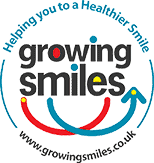The majority of us experience bleeding gums at some point during our adult lives. We usually notice blood in the sink when we are brushing our teeth or doing our interdental cleaning. Bleeding gums can be alarming and may be a sign of gingivitis – which is reversible, but it may be a sign of a more serious problem – periodontitis, which can result in tooth loss and impact your general health and wellbeing. Blood in the sink or saliva can make us avoid brushing or cleaning between our teeth – the exact opposite of what you should do!
Bleeding gums, although common, are NOT a sign of a healthy mouth and if you are experiencing this you must take action to get them back to health. Usually your first stop would be your dentist, but with dental practices likely to be closed to non-emergencies for some time just yet, what do you do when you realise you have bleeding gums?
First, let’s understand why you have bleeding gums. Periodontal (gum) disease is caused when bacteria in plaque biofilm (a sticky, colourless gel like film that forms in the mouth) builds up between the teeth and gums. When the bacteria begin to grow, the gums surrounding the tooth can become inflamed. If this inflammation is ignored it can cause the gums and the bone that holds teeth in your jaw to breakdown.
Below is Growing Smiles’ advice for dealing with bleeding gums when your dental team are unavailable:
- BRUSH YOUR TEETH Although it may be uncomfortable and bleed – keep cleaning! Make sure you clean around gum line.
- Spend time – if your gums are healthy 2 minutes should be enough. If you have bleeding gums or periodontitis you will need to spend longer.
- Clean between your teeth first (interdental cleaning) EVERY DAY. This is essential for preventing and managing gum disease. Interdental brushes are more effective than floss except where the teeth are too tight together for brushes to fit. Do this BEFORE tooth brushing or at a different time of day.
- Mouth rinses/washes offer an additional benefit but they are NOT AN ALTERNATIVE to physical plaque removal, which takes time. Use at a different time to brushing/interdental cleaning.
- Disclose your teeth to see where the plaque biofilm is located. This really helps improve your oral hygiene technique.
- Monitor, Manage and Maintain your gum health with a meticulous home care routine until you can visit your dental team again.
Tips on maintaining gum health and reducing the risk of bleeding gums (re)occurring:
- Reduce stress if possible or try stress reducing behaviours such as regular exercise, meditation, any sort of relaxation practices.
- Enjoy a healthy, balanced diet
- Don’t smoke
- Reduce alcohol intake
- Clean between your teeth every day BEFORE brushing
- Brush your teeth twice a day –at night and another time of the day. Try brushing first with a completely dry toothbrush. Get to ‘feel’ the clean tooth surfaces. Then put toothpaste on your brush and go round again. If you have gum problems this helps extend tooth brushing beyond the absolute minimum of 2 minutes.
- Use a fluoride toothpaste – Spit out after brushing but DON’T RINSE. Let the ingredients work for longer.
Remember – prevention is better than cure, so if you can, practise the maintenance steps as part of your daily routine. Do what YOU can, as WELL as you can for as LONG as it takes until your dental team are accessible to help with professional plaque removal.
